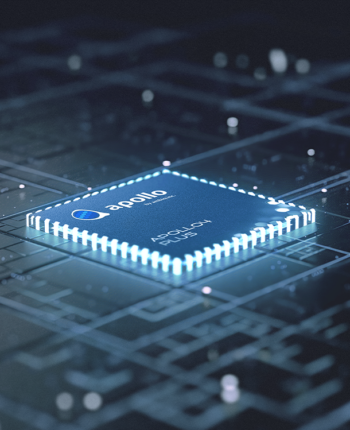5 Essential Elements For Ambiq apollo 3 datasheet
5 Essential Elements For Ambiq apollo 3 datasheet
Blog Article

Connect with extra gadgets with our big variety of reduced power interaction ports, including USB. Use SDIO/eMMC For extra storage that will help satisfy your software memory requirements.
Added responsibilities can be very easily included to the SleepKit framework by creating a new process course and registering it to the endeavor manufacturing facility.
The change to an X-O business demands not only the ideal know-how, but also the proper talent. Organizations will need passionate people who are pushed to build Remarkable ordeals.
Prompt: The digicam follows driving a white classic SUV using a black roof rack mainly because it quickens a steep Dust street surrounded by pine trees with a steep mountain slope, dust kicks up from it’s tires, the sunlight shines to the SUV as it speeds alongside the Dust street, casting a heat glow more than the scene. The Filth highway curves gently into the space, with no other automobiles or motor vehicles in sight.
“We believed we needed a fresh thought, but we acquired there just by scale,” mentioned Jared Kaplan, a researcher at OpenAI and one of many designers of GPT-3, within a panel discussion in December at NeurIPS, a leading AI meeting.
Our website takes advantage of cookies Our website use cookies. By continuing navigating, we believe your authorization to deploy cookies as in depth inside our Privateness Coverage.
Expertise truly normally-on voice processing using an optimized noise cancelling algorithms for apparent voice. Realize multi-channel processing and large-fidelity electronic audio with Improved digital filtering and very low power audio interfaces.
The model might also confuse spatial details of the prompt, for example, mixing up left and ideal, and should struggle with specific descriptions of activities that occur after some time, like subsequent a selected digital camera trajectory.
AI model development follows a lifecycle - initially, the information that will be accustomed to train the model need to be collected and geared up.
We’re teaching AI to be aware of and simulate the physical environment in motion, While using the purpose of training models that support people clear up issues that have to have actual-environment interaction.
Personal computer vision models enable equipment to “see” and seem sensible of photographs or video clips. They may be very good at activities such as item recognition, facial recognition, and in many cases detecting anomalies in health care photographs.
Shoppers simply just level their trash product at a monitor, and Oscar will tell them if it’s recyclable or compostable.
Even with GPT-3’s tendency to mimic the bias and toxicity inherent in the web textual content it had been skilled on, and Despite the fact that an unsustainably huge amount of computing power is required to train these kinds of a big model its tricks, we picked GPT-three as considered one of our breakthrough technologies of 2020—for good and unwell.
IoT applications depend heavily on info analytics and authentic-time decision producing at the bottom latency possible.
Accelerating the Development of Optimized AI Features with Ambiq’s neuralSPOT
Ambiq’s neuralSPOT® is an open-source AI developer-focused SDK designed for our latest Apollo4 Plus system-on-chip (SoC) family. neuralSPOT provides an on-ramp to the rapid development of AI features for our customers’ AI applications and products. Included with neuralSPOT are Ambiq-optimized libraries, tools, and examples to help jumpstart AI-focused applications.
UNDERSTANDING NEURALSPOT VIA THE BASIC TENSORFLOW EXAMPLE
Often, the best way to ramp up on a new software library is through a comprehensive example – this is why neuralSPOt includes basic_tf_stub, an illustrative example that leverages many of neuralSPOT’s features.
In this article, we walk through the example block-by-block, using it as a guide to building AI features using neuralSPOT.
Ambiq's Vice President of Artificial Intelligence, Carlos Morales, went on CNBC Street Signs Asia to discuss the power consumption of AI and trends in endpoint devices.
Since 2010, Ambiq has been a leader in ultra-low power semiconductors that enable endpoint devices with more data-driven and AI-capable features while dropping the energy requirements up to 10X Ultra-low power lower. They do this with the patented Subthreshold Power Optimized Technology (SPOT ®) platform.
Computer inferencing is complex, and for endpoint AI to become practical, these devices have to drop from megawatts of power to microwatts. This is where Ambiq has the power to change industries such as healthcare, agriculture, and Industrial IoT.
Ambiq Designs Low-Power for Next Gen Endpoint Devices
Ambiq’s VP of Architecture and Product Planning, Dan Cermak, joins the ipXchange team at CES to discuss how manufacturers can improve their products with ultra-low power. As technology becomes more sophisticated, energy consumption continues to grow. Here Dan outlines how Ambiq stays ahead of the curve by planning for energy requirements 5 years in advance.
Ambiq’s VP of Architecture and Product Planning at Embedded World 2024
Ambiq specializes in ultra-low-power SoC's designed to make intelligent battery-powered endpoint solutions a reality. These days, just about every endpoint device incorporates AI features, including anomaly detection, speech-driven user interfaces, audio event detection and classification, and health monitoring.
Ambiq's ultra low power, high-performance platforms are ideal for implementing this class of AI features, and we at Ambiq are dedicated to making implementation as easy as possible by offering open-source developer-centric toolkits, software libraries, and reference models to accelerate AI feature development.
NEURALSPOT - BECAUSE AI IS HARD ENOUGH
neuralSPOT is an AI developer-focused SDK in the true sense of the word: it includes everything you Ai edge computing need to get your AI model onto Ambiq’s platform. You’ll find libraries for talking to sensors, managing SoC peripherals, and controlling power and memory configurations, along with tools for easily debugging your model from your laptop or PC, and examples that tie it all together.
Facebook | Linkedin | Twitter | YouTube